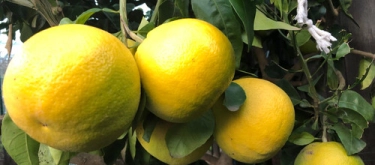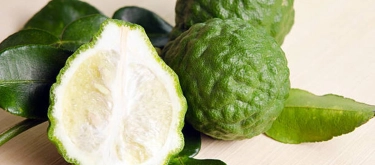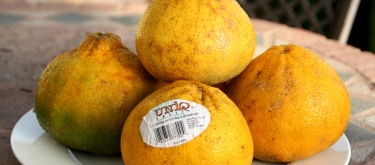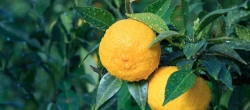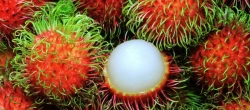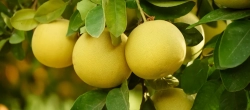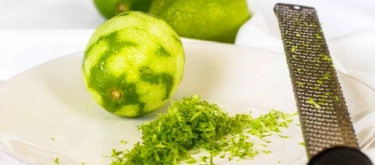Mandarin: Taste Profile, Aroma, Benefits and Health Risks
Mandarin (Citrus reticulata) is a small, aromatic citrus fruit renowned for its pleasantly sweet flavor, ease of peeling, and wide culinary versatility. Originating from Southeast Asia and later extensively cultivated worldwide, mandarins hold a cherished place in various culinary traditions, especially popular during winter festivities. Loved globally for their refreshing sweetness, mandarin oranges feature prominently in fresh consumption, desserts, beverages, and festive celebrations.
Mandarins are suitable for vegetarians, vegans, and gluten-free diets. However, individuals with citrus allergies or sensitivities may experience mild allergic reactions. Additionally, their acidity may irritate gastrointestinal conditions, such as gastritis or acid reflux.
What does Mandarin taste like?

Complete Sensory Description
Taste
Mandarins are prized for their sweet, refreshingly juicy, and mildly acidic flavor. Unlike other citrus fruits, mandarins exhibit lower acidity and higher sweetness, creating a mellow, harmoniously balanced taste. Distinctively mild citrus notes are complemented by subtle honeyed undertones, and depending on the variety, gentle floral or tropical-fruit nuances may emerge. The flavor is consistently smooth, delicate, and pleasingly sweet, making mandarins highly approachable for diverse palates.
Aroma
Mandarins feature an inviting, sweet, citrus fragrance with subtle floral accents. Their peel, rich in aromatic essential oils (primarily limonene and linalool), releases bright, refreshing, and uplifting scents upon peeling or zesting, evoking a sense of freshness and warmth.
Texture
Mandarin flesh is exceptionally juicy, tender, and slightly pulpy, providing a soft, easy-to-chew experience. Thin, loose skin makes mandarins remarkably easy to peel, while their segments separate effortlessly, enhancing convenience and culinary appeal. The thin membranes around each segment offer minimal resistance, contributing to a smooth, enjoyable eating experience.
Appearance
Mandarins present vibrant shades ranging from bright orange to deep reddish-orange hues. The fruit is characteristically small, rounded, and somewhat flattened, with loose, glossy skin that's easy to remove. Flesh color ranges from bright orange to deep amber, adding visual appeal in fresh or culinary presentations.
In-depth Flavor Analysis
Mandarins’ unique sweetness and balanced acidity result from their biochemical composition, influenced primarily by sugars, organic acids, and aromatic compounds. Higher concentrations of fructose and sucrose compared to other citrus fruits significantly elevate sweetness perception, providing mellow sweetness without pronounced tartness.
Citric acid provides gentle acidity, considerably milder than oranges or lemons, contributing subtle tartness and fresh flavor without overwhelming sweetness. This low acidity makes mandarins particularly appealing and suitable even for sensitive palates or children.
The aromatic complexity in mandarins arises from a combination of volatile compounds, including limonene, gamma-terpinene, linalool, and various esters. These essential oils yield delicate floral, herbaceous, and tropical fruit nuances, enhancing mandarins' sensory appeal. The presence of β-myrcene adds herbal and slightly spicy notes, particularly noticeable in zest and freshly peeled fruit.
Ripeness, climate, and variety greatly influence mandarin flavor. Cooler climate-grown mandarins tend to have higher acidity and more pronounced aromatic depth, whereas warmer climates produce sweeter, slightly richer, and less acidic mandarins.
Varieties and Culinary Applications
Clementine
- Exceptionally sweet, seedless, and easily peeled; ideal for fresh eating, salads, snacks, and desserts.
Satsuma
- Extremely juicy, tender flesh with mild sweetness; perfect for fresh eating, juicing, and salads.
Tangerine (Mandarin hybrid)
- Slightly richer flavor, deeper sweetness, firmer flesh; commonly eaten fresh, juiced, or used in cooking.
Clementine
- Sweet, seedless, mild flavor; versatile fresh, in desserts, salads, or juicing.
Culinary Versatility
Mandarins excel in diverse culinary contexts:
- Fresh Consumption: Snacks, fruit salads, breakfast dishes, and lunchbox treats.
- Desserts: Cakes, pastries, puddings, jellies, sorbets, and marmalades.
- Salads: Adds sweetness and juicy freshness to leafy greens or fruit salads.
- Sauces and Dressings: Enhances marinades, vinaigrettes, sauces, or glazes for poultry, seafood, or vegetables.
- Beverages: Juices, smoothies, cocktails, teas, and infusions.
Selection and Storage
Selecting Quality Mandarins
- Choose fruits with brightly colored, smooth skin, feeling heavy for size and slightly yielding when pressed gently.
- Avoid fruits with shriveled, moldy, excessively soft, or blemished skin.
Storage Recommendations
- Store mandarins at cool room temperature for up to a week, or refrigerate (4–8°C / 39–46°F) for 2–3 weeks.
- Refrigeration prolongs freshness, retains juiciness, and prevents spoilage.
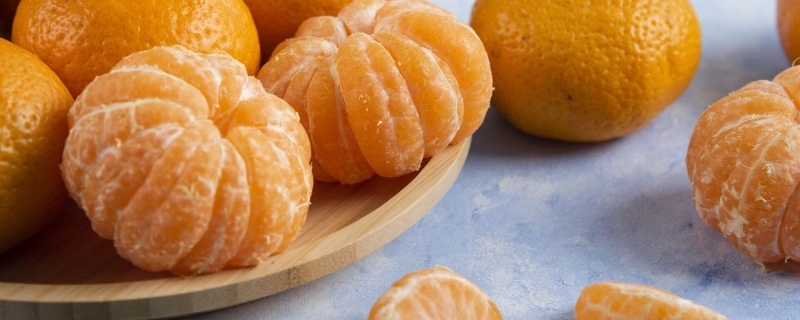
Nutritional Insights
-
Vitamin C and Antioxidants:
Excellent vitamin C source, boosting immune function, antioxidant protection, collagen synthesis, and overall cellular health. -
Dietary Fiber:
Provides soluble dietary fiber beneficial for digestive health, aiding in cholesterol regulation and gut function. -
Rich in Flavonoids:
Contains antioxidant flavonoids, such as hesperidin and naringenin, reducing inflammation and oxidative stress. -
Hydrating, Low-Calorie Snack:
Juicy, low-calorie fruit ideal for hydrating, healthy diets, satisfying sweet cravings naturally and nutritiously.
Expert Insights & Culinary Tips
-
Flavor Pairings:
Mandarins pair beautifully with spices (cinnamon, cardamom, ginger), nuts (almonds, pistachios), chocolate, seafood, chicken, leafy greens, cheeses, honey, and yogurt. -
Maximizing Flavor:
Utilize zest for flavoring desserts, sauces, marinades, or beverages to fully capture mandarins' aromatic complexity. -
Balancing Sweetness:
Balance mandarin sweetness with contrasting ingredients—sharp cheeses, acidic dressings, or savory spices—for harmonious culinary combinations.
Interesting and Curious Facts
- Mandarins symbolize prosperity and luck in Chinese culture, traditionally gifted and displayed during Lunar New Year celebrations.
- Tangerines, originally hybrids of mandarins, derive their name from the city of Tangier, Morocco, historically significant in citrus trade.
- Mandarin oranges remain integral to Asian New Year celebrations, symbolizing prosperity, good fortune, and longevity.
Harm and Dietary Considerations
-
Citrus Allergies:
Rare, but individuals allergic or sensitive to citrus fruits should avoid mandarins to prevent allergic reactions. -
Digestive Sensitivity:
Excessive consumption may exacerbate symptoms of gastritis, reflux, or other acid-sensitive conditions due to mild acidity.
Religious Dietary Considerations
Mandarins are universally acceptable in all major religious dietary traditions:
- Islam: Permissible (Halal).
- Judaism: Permissible (Kosher, Parve).
- Hinduism & Buddhism: Permissible; mandarins commonly feature in religious offerings.
- Christianity & other religions: No known dietary restrictions apply.
Final Thoughts & Sensory Journey
Mandarins captivate with their delicate sweetness, aromatic zest, and effortlessly juicy texture. A beloved fruit globally, mandarins elevate dishes from simple snacks to gourmet creations, offering unforgettable culinary experiences through their vibrant freshness, balanced sweetness, and nutritional excellence.
Resources
- McGee, H. (2004). On Food and Cooking: The Science and Lore of the Kitchen. Scribner.
- USDA FoodData Central (2023). Mandarin Nutritional Composition and Handling.
- Food and Agriculture Organization (FAO). (2021). Global Citrus Fruits: Cultivation, Nutrition, and Culinary Uses.


